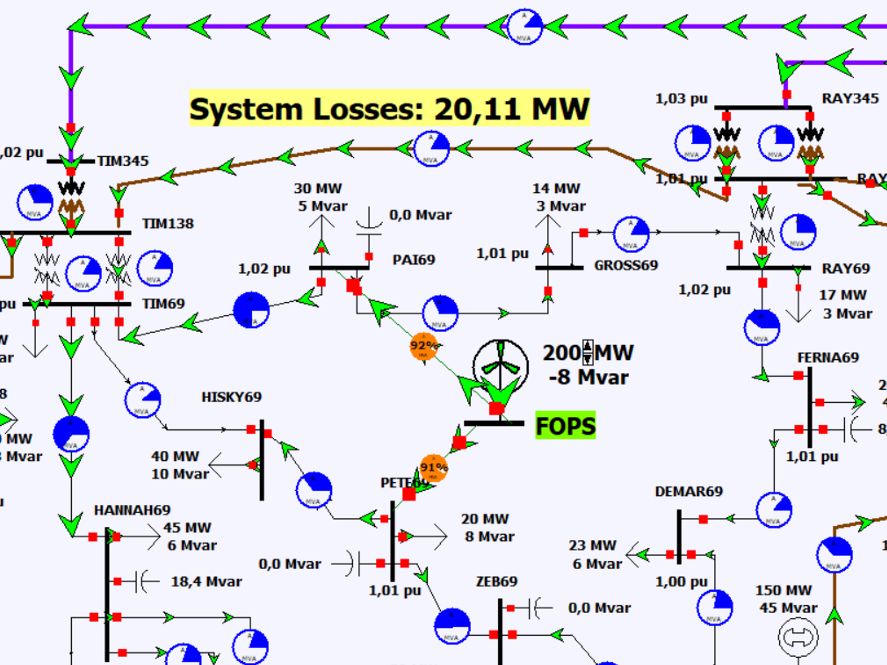Wind Turbine Grid Integration Analysis
Analyzing the impact and cost-effectiveness of wiring configurations for wind turbine grid integration using PowerWorld Simulator.
Project Overview
This project, undertaken for "FOPS," a leading wind energy developer, aimed to determine the most cost-effective and technically sound design for integrating a new 200 MW wind farm into the Metropolis power grid. The wind farm utilized Type 3 DFIG turbines with specific voltage and reactive power characteristics. A key requirement was to feed the wind farm's output into two separate interconnection substations (chosen from PAI, PETE, and DEMAR, all at 69 kV) to ensure reliability.
The analysis involved evaluating three different conductor types (ROOK, CROW, CONDOR), each with unique electrical properties and costs. The primary goal was to minimize the total cost, considering both the initial investment for conductors and the cumulative cost of power losses over a 5-year operational period. PowerWorld Simulator was the primary tool for modeling the grid and performing various load flow analyses across 27 different experimental scenarios.

Key Features & Technologies
- Power System Modeling & Simulation: Extensive use of PowerWorld Simulator to model the existing grid and the proposed wind farm interconnections.
- Economic Analysis: Detailed cost-benefit analysis comparing different transmission line configurations, conductor types, and their associated power losses over a 5-year horizon.
- Transmission Line Parameterization: Considered varying conductor costs, current ratings, resistances, and inductive reactances for ROOK, CROW, and CONDOR conductors.
- System Loss Calculation: Quantified system-wide power losses for each scenario to determine the most efficient configurations.
- Reliability Considerations: Ensured the design met the requirement of connecting the wind farm to two distinct substations.
- Scenario Testing: Conducted and documented 27 distinct experiments to evaluate different combinations of substation connections and conductor types.
Project Documents
The detailed analysis, experimental results, and budgetary calculations for this project are available in the following reports. These documents outline the problem statement, data, methodologies, and the various experiments conducted.
Outcomes & Learning
Out of 27 simulated experiments, only two configurations were found to be fully operational without overloading conductors. The analysis concluded that "Experiment 9" – connecting the FOPS wind farm to the PETE substation with CONDOR conductors and to the PAI substation also with CONDOR conductors – was the optimal solution. This configuration offered the lowest system losses (20.11 MW) among the working scenarios and presented the best overall economic value when considering both cable costs and the 5-year cost of energy losses.
This project provided significant practical experience in power system planning and analysis using PowerWorld Simulator. Key learnings included the critical impact of conductor selection on system efficiency and cost, the methodologies for performing comparative economic analyses for infrastructure projects, and the importance of iterative testing to identify robust and reliable solutions. The process of simulating numerous scenarios enhanced understanding of load flow dynamics and grid integration challenges for renewable energy sources.